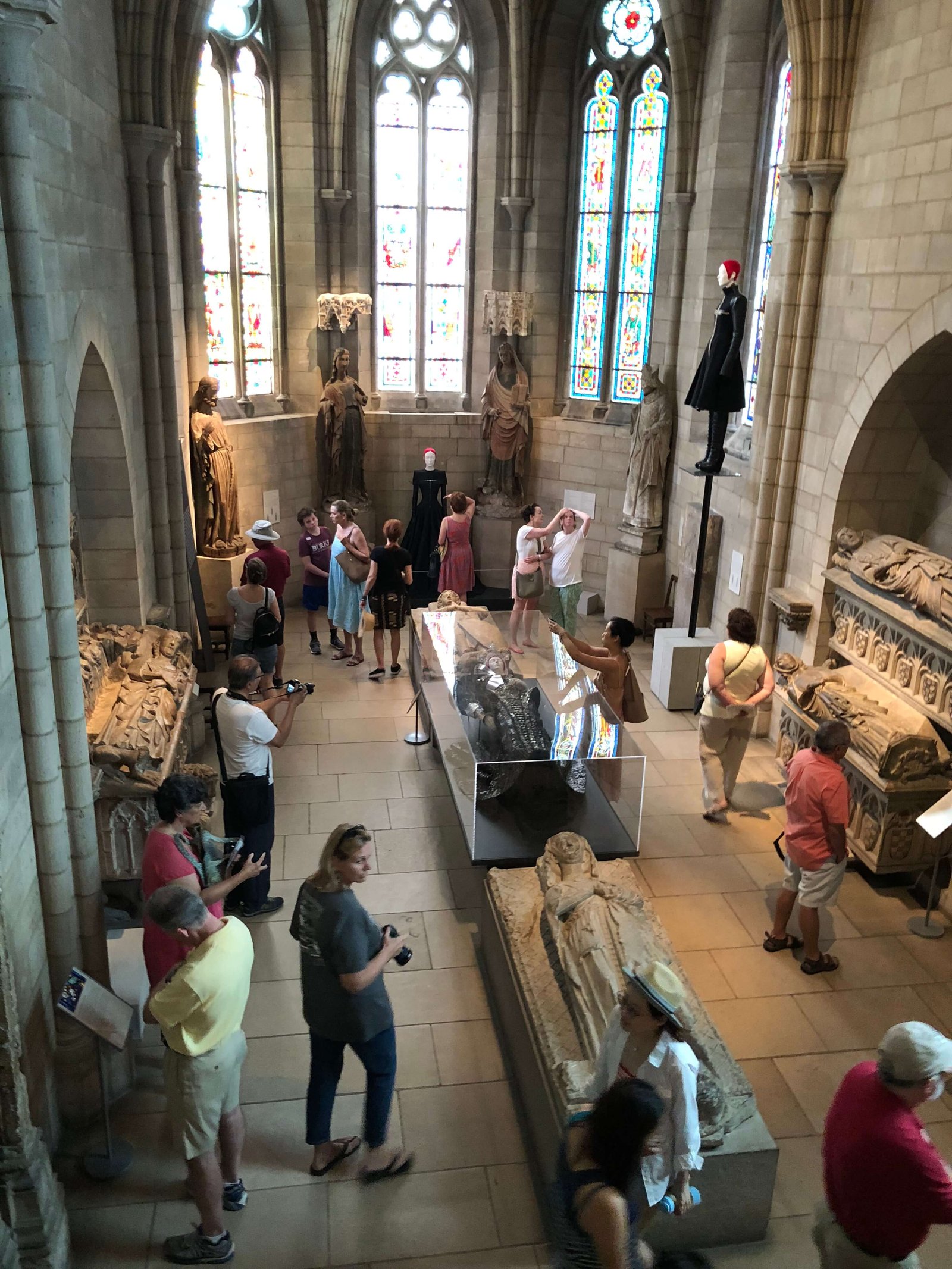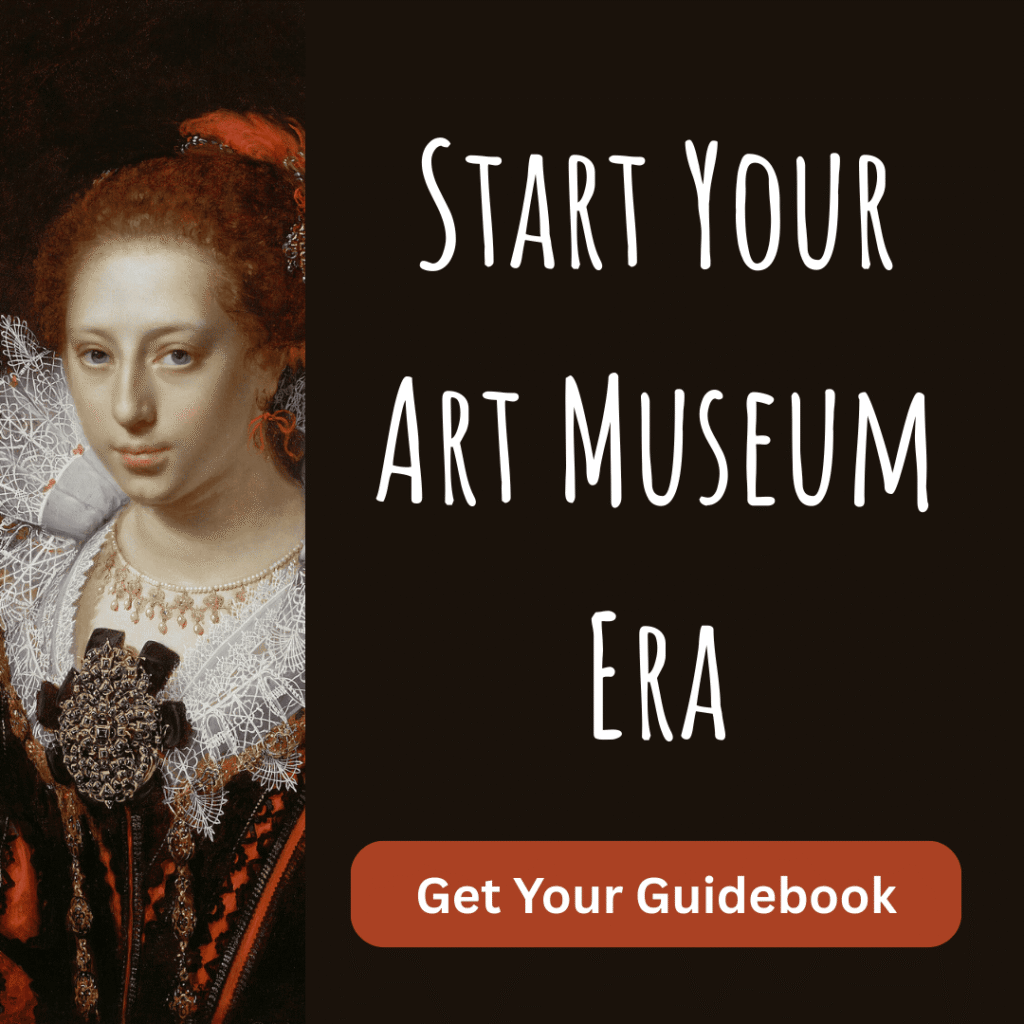During my visit to the Metropolitan Museum of Art this past weekend, I got to see two parts of the summer blockbuster Heavenly Bodies: Fashion and the Catholic Imagination. I had already seen the third part when I visited the Met Cloisters earlier this month, so now I can write about the whole experience!
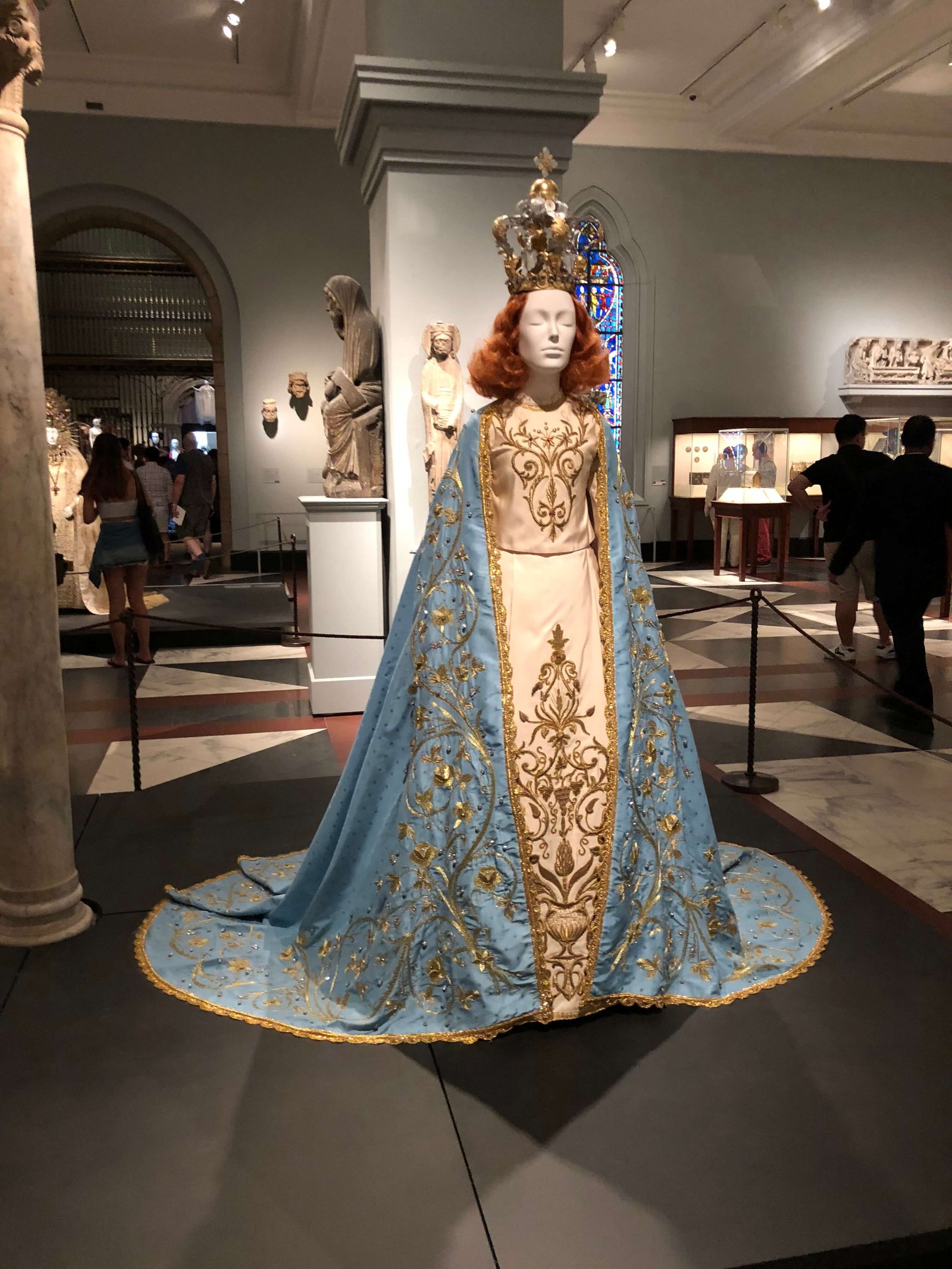
Heavenly Bodies is an exhibition of high fashion influenced by Catholicism. It features the likes of Chanel, Versace, Dolce and Gabbana, Alexander McQueen, and John Galliano. The Met’s summer fashion exhibition often features the works of such designers, but this experience is completely unlike anything the museum has previously done. That’s because most of the exhibition takes place in the museum’s main gallery spaces, specifically the Met Cloisters and the Byzantine and Medieval Galleries on Fifth Avenue. The fashion appears amongst works of medieval Christian art.
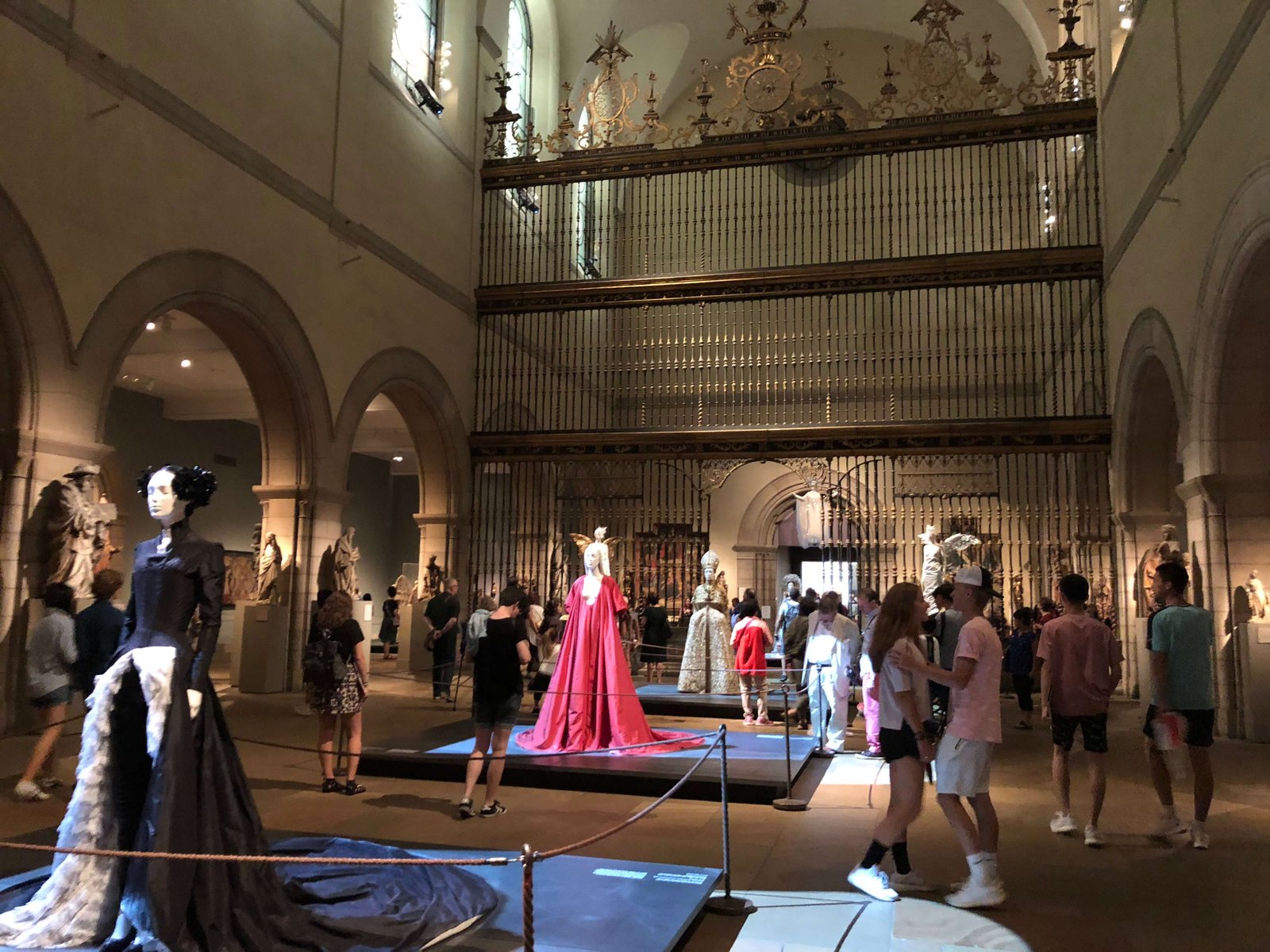
First, some thoughts on the overall experience
I completely loved this arrangement. I think that displaying the fashion in the midst of the medieval collection is so effective. It gives the fashion some helpful context and creates a nice dialogue between the medieval and the modern. As someone much more familiar with medieval art than with fashion, I found that this made the fashion a bit more accessible to me. I would like to think that it does something similar for visitors more comfortable with fashion than medieval art.
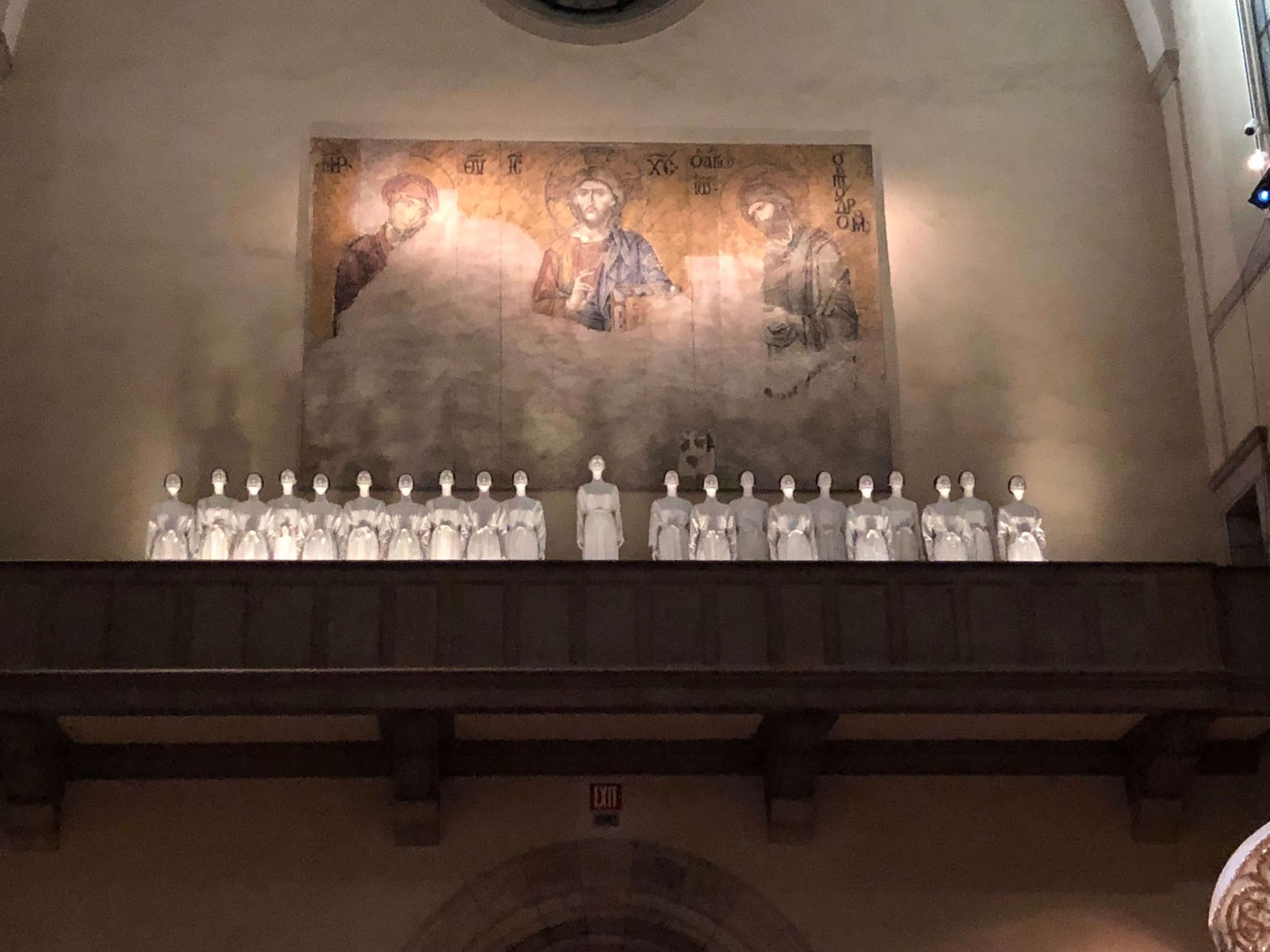
Additionally, this arrangement provides the opportunity for a lot of great curatorial choices. My favorites are two wedding dresses kneeling in prayer in medieval church apses at the Cloister, the choir of angelic dresses high up in a balcony on Fifth Avenue (shown above), and warrior-like ensembles laying in glass cases amongst the tomb effigies. Not only is this so much more interesting than rows of mannequins, though there are some of these too, but it is also deeply enhanced by the art and architecture all around. You couldn’t dream of a better setting. The exhibition design is highly theatrical, particularly in the music playing throughout the galleries, and this adds to the experience as well. However, if you want to go enjoy the actual medieval art at the Met Fifth Avenue, I would suggest waiting until after Heavenly Bodies closes in the gall. The atmosphere in the medieval galleries right now is quite distracting, even for a devoted medieval art lover like me. Things are much calmer at the Cloisters, though, and I think the show complements the permanent collection nicely there.
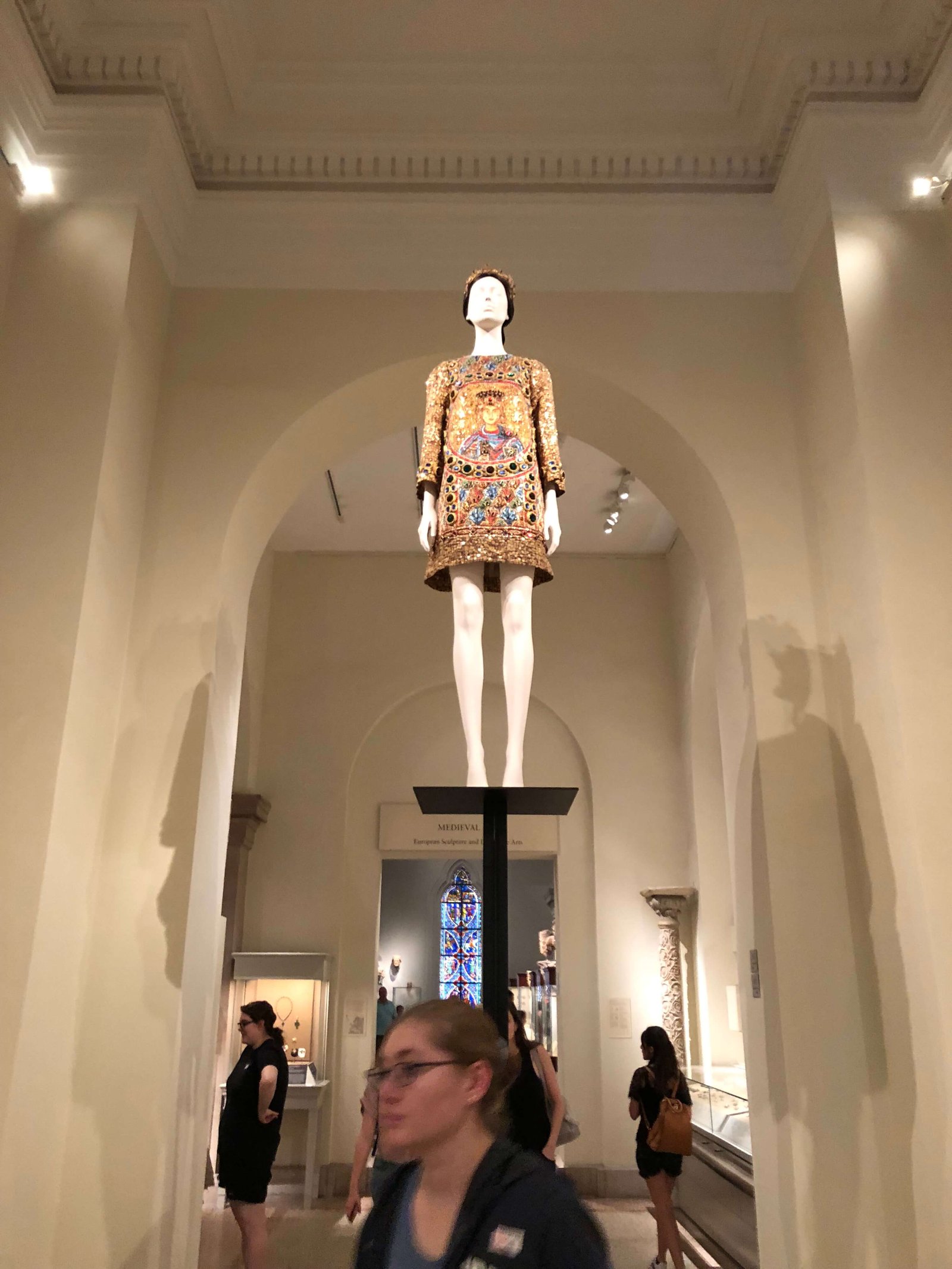
Another reason this arrangement works so well is because the galleries used are much more spacious than the Anna Wintour Costume Center, where the Met’s fashion exhibitions usually appear. The crowds this exhibition draws flow much better through these galleries. I’m not the biggest fan of the Costume Center, as I often find it unfriendly. I think that setting the clothing in lighter and more accessible galleries is much more pleasant. I would love to see the Met continue with this strategy for future fashion exhibitions, though I worry that they won’t be able to live up to this one.
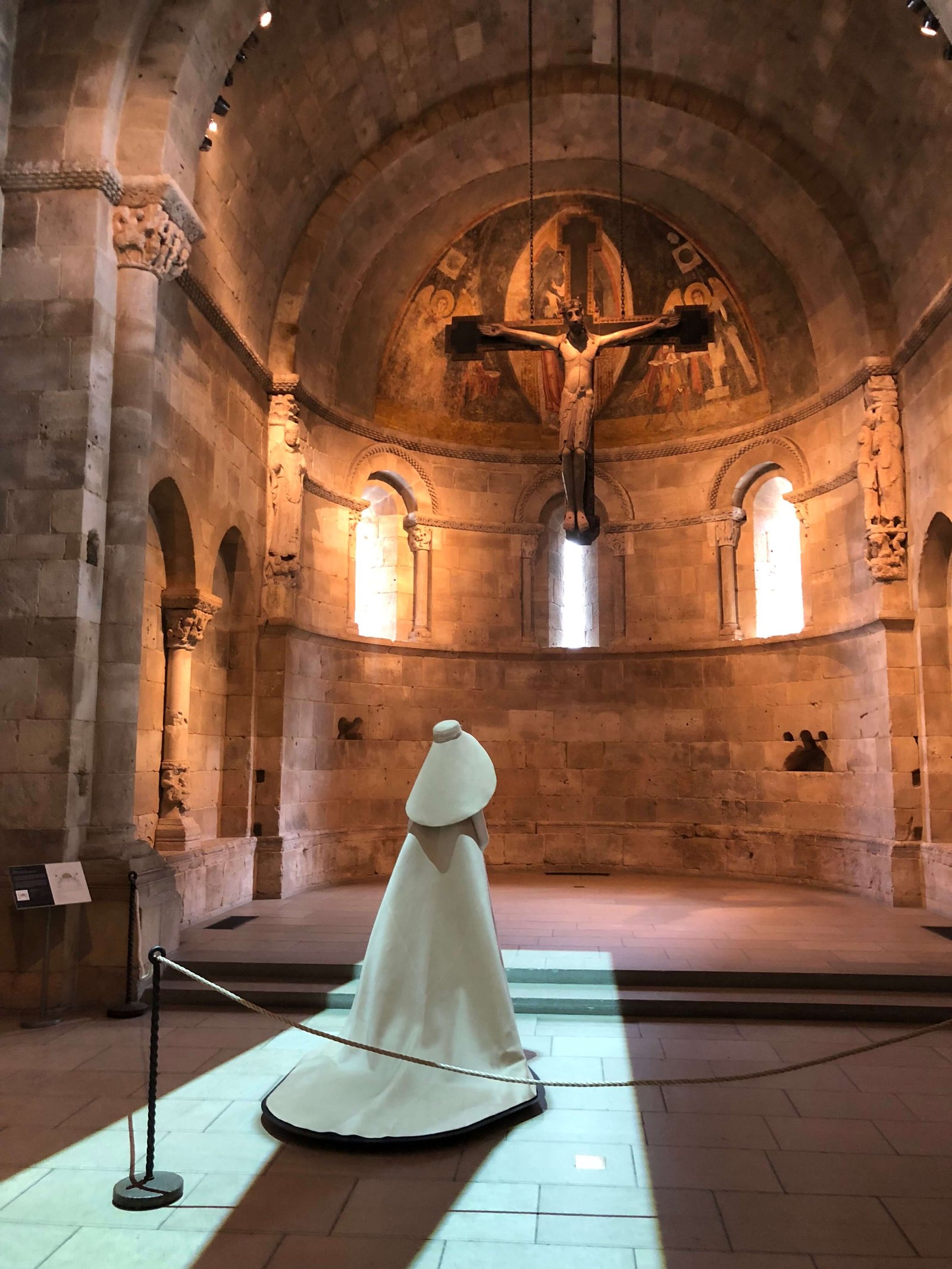
To see the entire exhibition, you really do have to look everywhere. The modern and medieval are truly well mixed, sometimes even appearing in the same glass cases. Surprisingly, it’s not always immediate apparent which is which at a quick glance. Also, make sure to pick up a special Heavenly Bodies map available throughout the museum to make sure you see everything. For example, there’s one gallery in the Robert Lehman Wing that’s easy to miss.
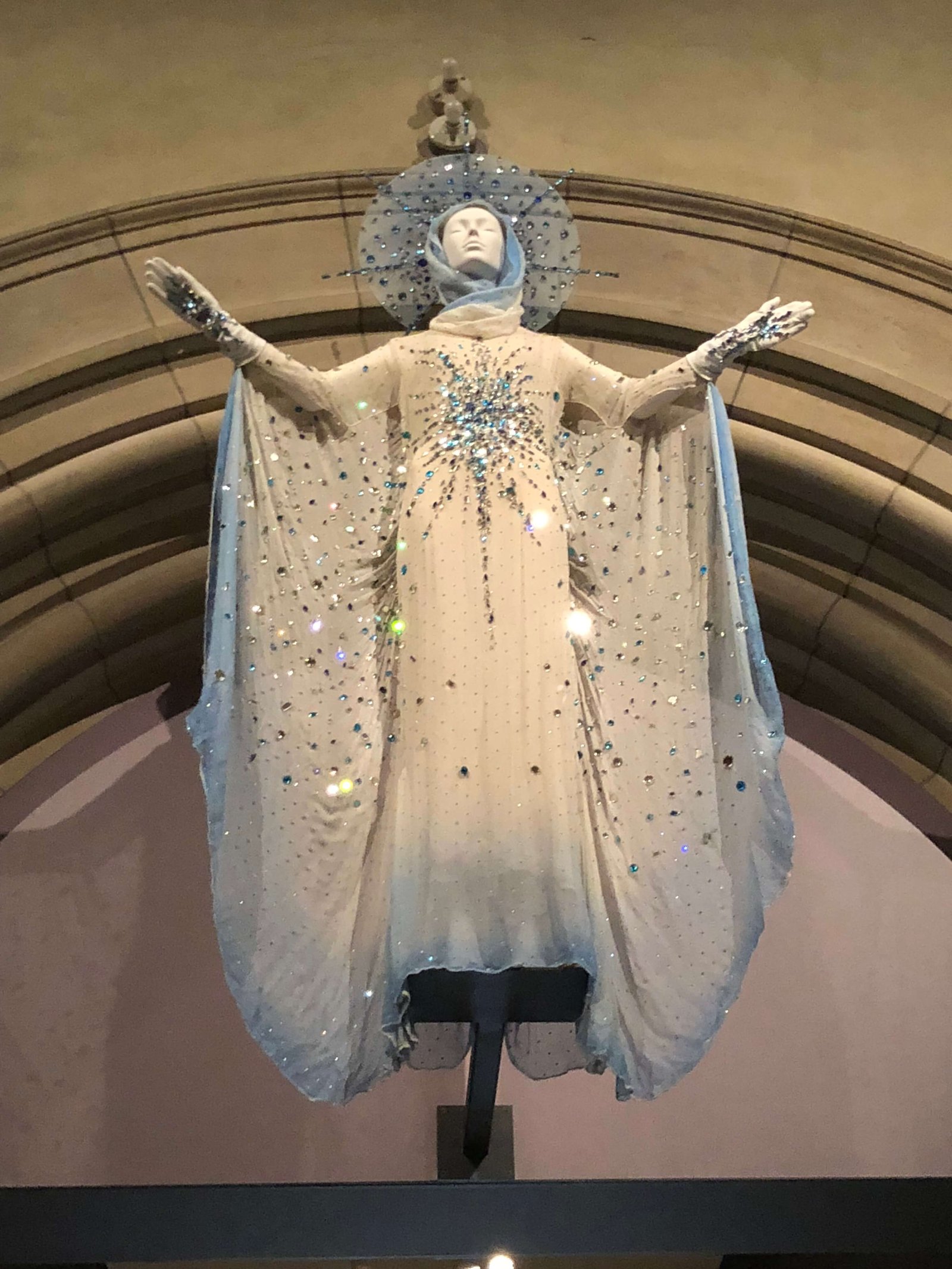
Now, for the actual fashion
Before going any further, I should admit that I don’t have any background in fashion. I enjoy the Costume Institute show every year, but I don’t feel that I always understand what I’m seeing. My knowledge of art history doesn’t seem to translate to fashion exhibitions, so what follows is only my spectator’s opinion.
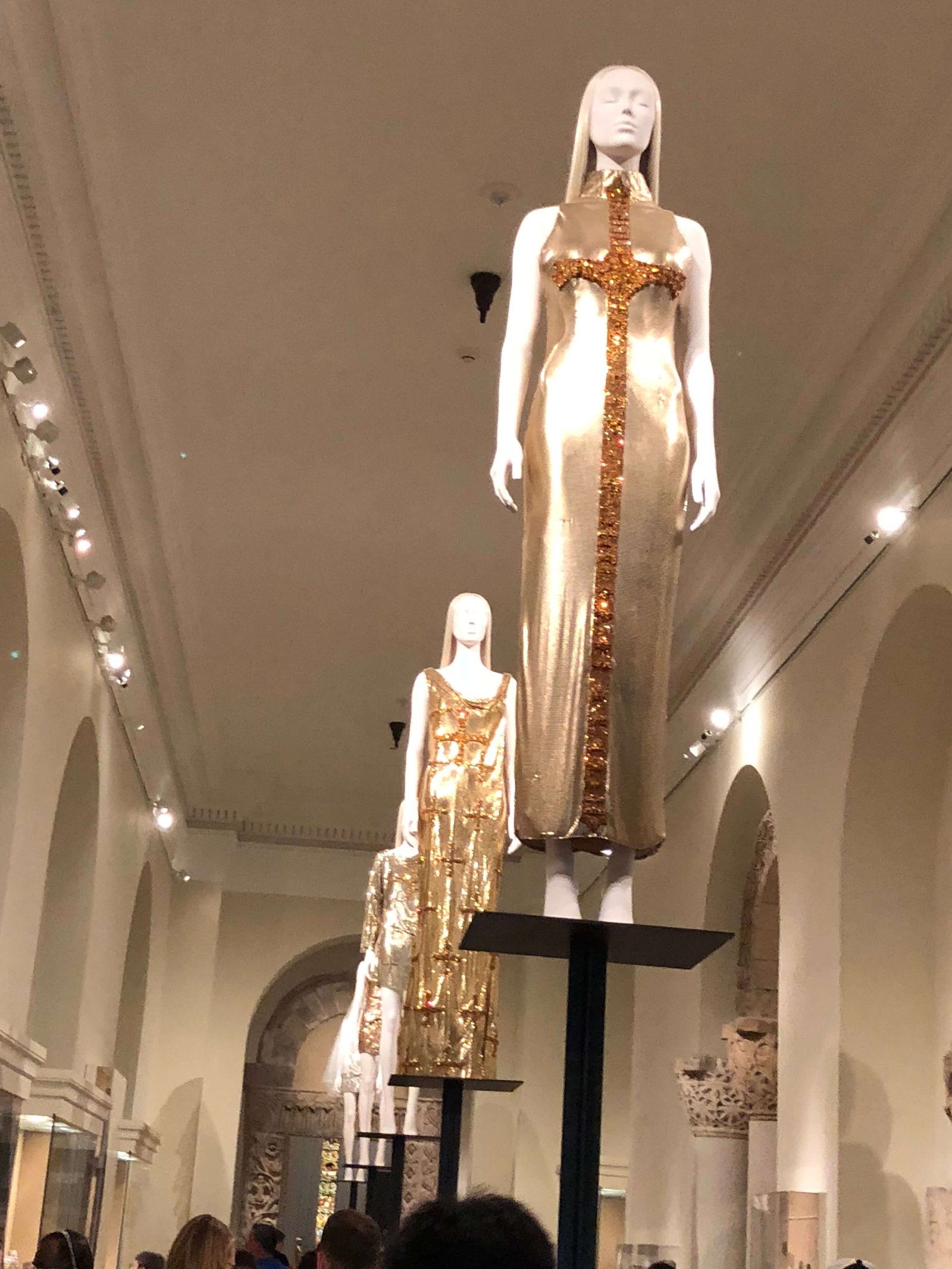
The creativity on display is spectacular. Designers have found the most inventive ways to bring aspects of Catholic art and custom into their clothing. As you might expect from anything high fashion, some of it is crazy, elaborate, and over-the-top. There are wedding gowns sprouting angel wings, elaborate crowns, and dresses encrusted with pseudo armor. They’re a lot of fun to look at, but I can’t imagine anybody actually wearing them. However, other ensembles are very wearable, though still unusual. For example, there are two series of dresses inspired by Byzantine mosaics, one set with the faces of saints embellished on them and another with different styles of gold crosses all over. At the Cloisters, I saw a whole series of dresses based on Hieronymus Bosch’s Garden of Earthly Delights. In the Byzantine galleries on Fifth Avenue, there are some striking black leather motorcycle jackets with massive jeweled crosses on them. Some of the more subtle, yet certainly inventive, ensembles are based on monastic attire. I also really enjoyed two angel dresses (one shown here), though they seem as much Winged Victory to me as they do Heavenly hosts.
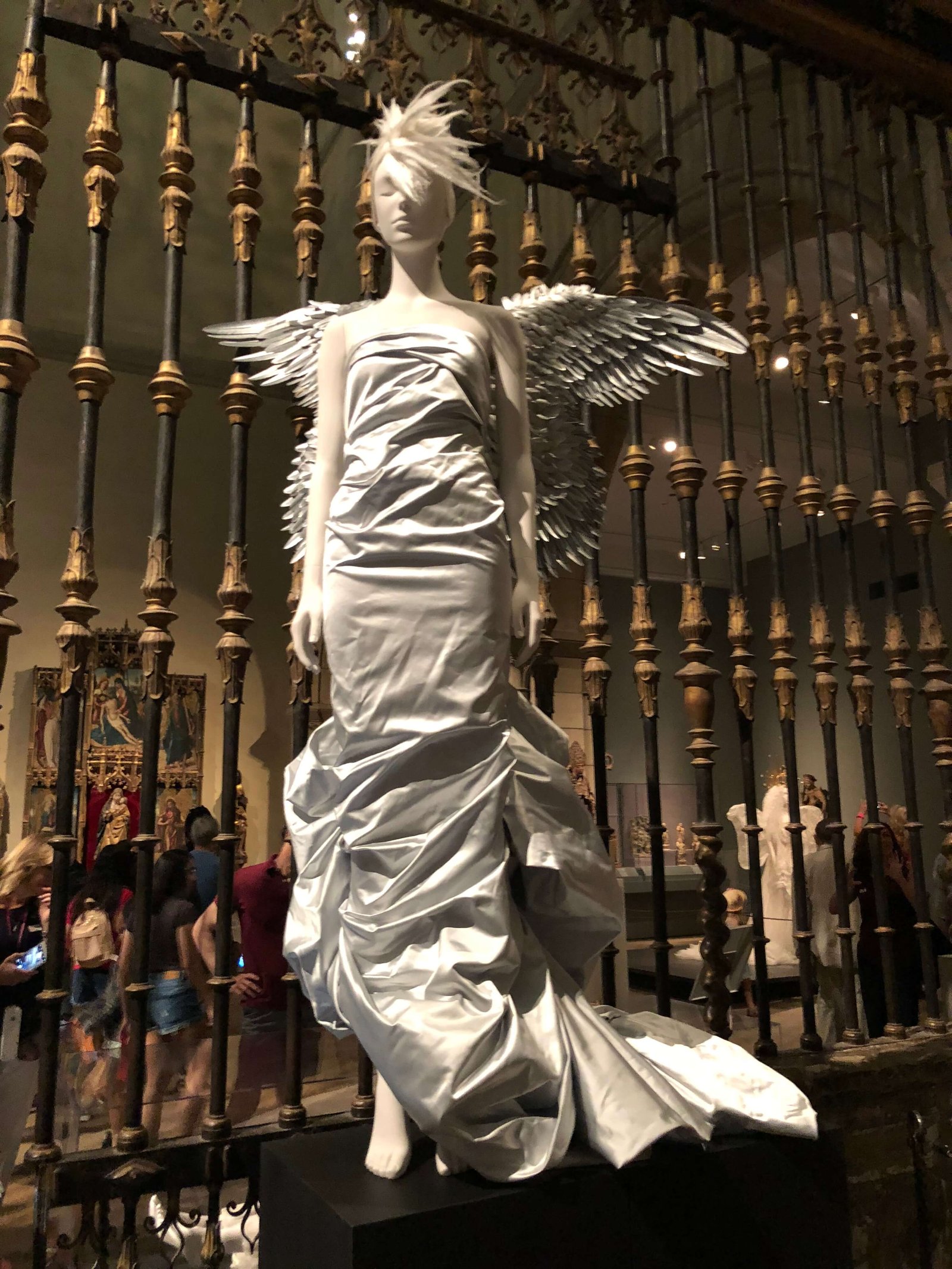
In a few cases, though, the connections between the clothes and the Catholic tradition isn’t strong. Based on what I read in the wall labels, it seems that the designers have strongly indicated these connections through the names of their collections and such. However, I never would have picked up on any of this if I had seen the clothing in a different context.
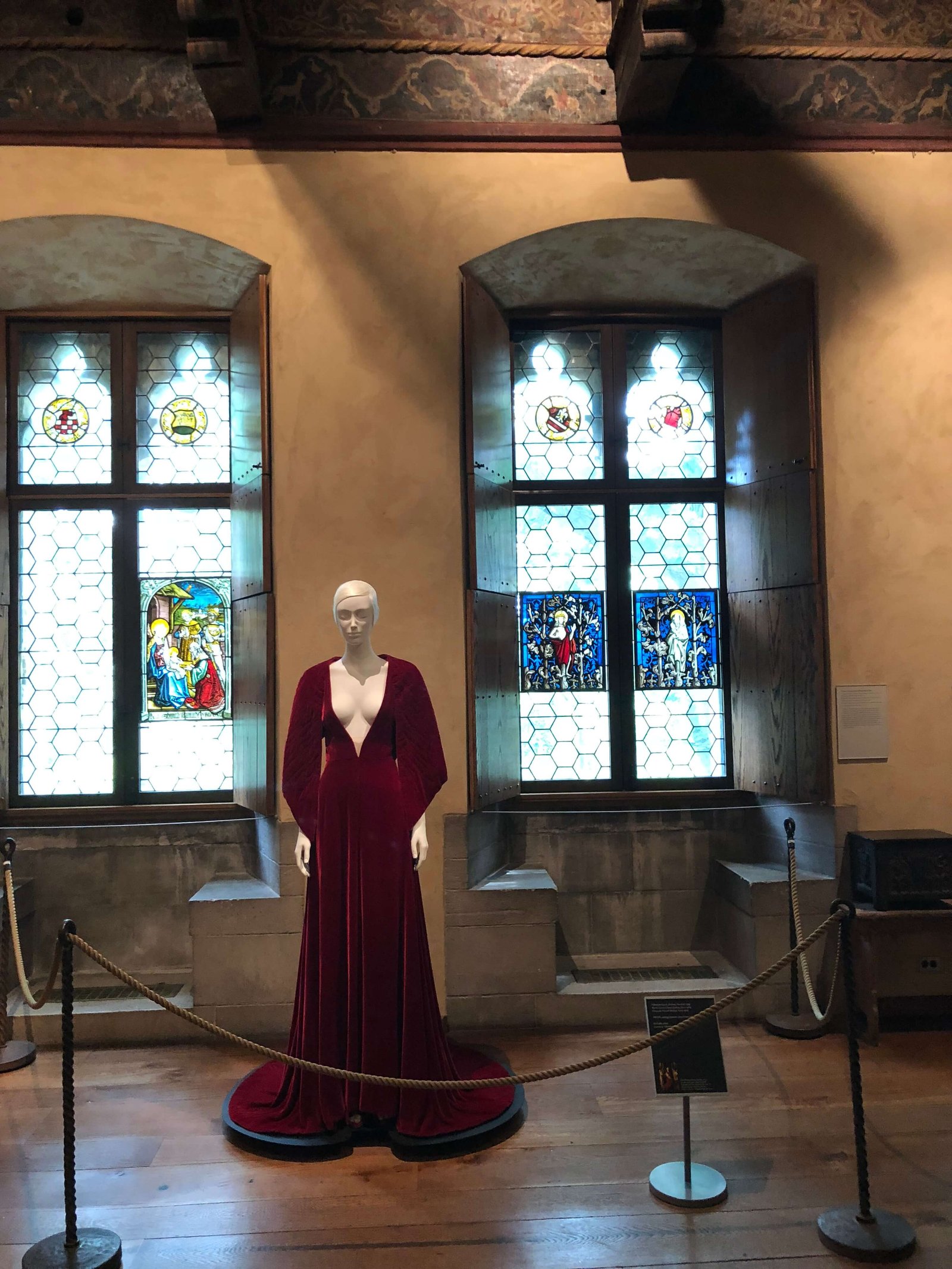
The Anna Wintour Costume Center, in the basement of the Met Fifth Avenue building, displays historical attire of nineteenth and twentieth-century Popes. Apparently, many of these items have never left the Vatican before. This stuff is hardly less dramatic than the high fashion, and it’s lots of fun to look at up close. The beaded, gilt, and embroidered details in the Papal vestments are really spectacular. Many of these objects merit close examination, and fortunately the display encourages this. I particularly enjoyed the last room, which contains Papal miters, tiaras, jewels, and other accoutrements. There is as much gold and diamonds as a Tiffany store in there! I recently read a book that spoke a lot about Renaissance Papal excesses, and it was definitely interesting to view Papal attire in that context. No photos are allowed in these galleries.
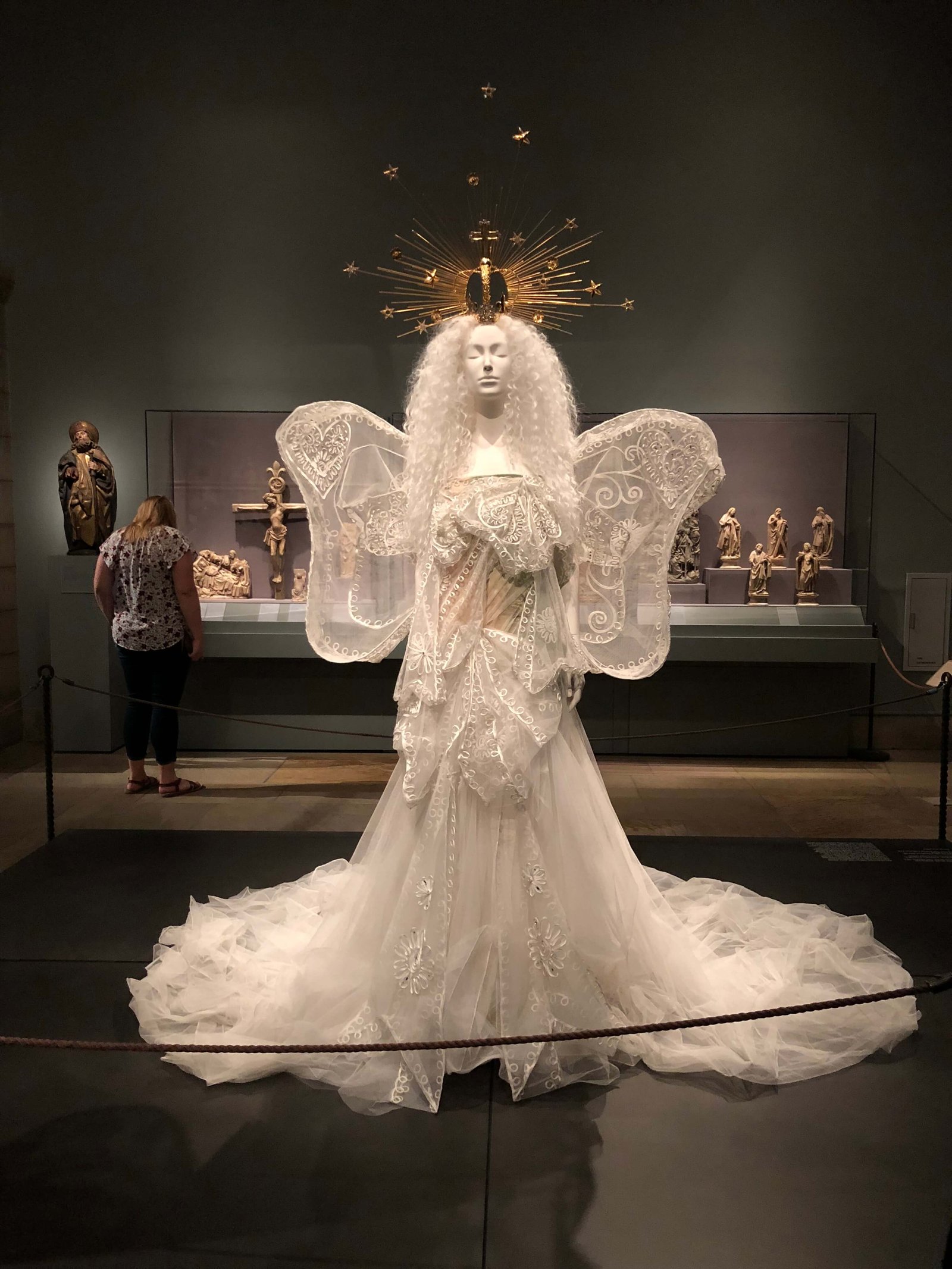
Whether you enjoy religious art, high fashion, or just cool experiences, I highly recommend Heavenly Bodies. The show is gorgeous visually, highly imaginative, and will help you see both Christian art in a new light – no matter whether you’re super familiar with it or not at all. The exhibition is on view at the Met Fifth Avenue (galleries 300-306, 955, 980-981) and Met Cloisters (1-20) through October 8, 2018.
